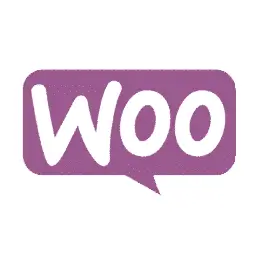Spanish-English-Norwegian Wordpress translation
We set up your WordPress website and configure it to translate from English to Norwegian or from Norwegian to English. Translate your WordPress and start selling your products also in Norway.

Ever thought of translating your WordPress corporate site into Norwegian?
WordPress is the most widely used Content Management System (CMS) on the Internet. More than 60% of websites in English or Norwegian have been developed using this popular CMS.
In a globalized world, translating your WordPress from English into Norwegian makes it possible to expand your market niche and sell your products and services in other interesting countries like Norway.
Our native Norwegian-speaking translators will faithfully translate your most valued content into Norwegian. They will employ the right words and phrasing to capture the attention of your potential customers located in and in other countries where Norwegian is widely used.
Once your WordPress is linked to our translation management platform, we will import every piece of content and text string. All translations will be assigned and reviewed by expert Spanish-English-Norwegian translators. All pieces of information are taken into account: pages, posts, custom fields and custom post types, taxonomies (like categories and tags), slugs, menus, widgets and meta-tags to help you rank your site properly.

Multilingual plugin available in Norwegian
By default, WordPress is not designed to be multilingual. WPML is a plugin developed by OntheGoSystems that allows you to translate you WordPress site into Norwegian. You can also choose the local dialect of Norwegian that is spoken in Norway. That way, you will be addressing Norwegians in proper Norwegian and encourage them to buy your products and services.
Our English-Spanish-Norwegian translation service for WordPress includes a lifetime license and updates for the WPML plugin. In order to calculate the volume of words to be translated, we can install this multilingual plugin and easily export the WordPress content into our translation management platform. You will only be paying a word rate.
Translation memories are multilingual databases where English / Spanish / Norwegian sentences are paired and saved for future use. This is a significant cost saving, since the same sentence is translated and paid for one single time.
Translating your WordPress website into Norwegian will rank your pages in Google and Yahoo. With a good SEO strategy Norwegians will find you and trust your brand more. Translating for SEO purposes is also called International SEO. In the case of WordPress, we specially recommend the Yoast SEO plugin, which is compatible with WPML and allows for the translation of meta-tags (title, description and keywords) from English into Norwegian or vice versa.

Woocommerce: get your online shop easily translated into Norwegian or from Norwegian
Woocommerce is a comprehensive set of plugins for creating your online shop. Why not translating your shop into Norwegian? Choose your best selling services and products: now you can translate all your product names, description and the purchase process into Norwegian or into any language you choose. Woocommerce is fully compatible with both WPML and Yoast SEO, so if you invest in translating into Norwegian you can be sure that your website will not have any incompatibility issues.
Do not limit your market share to English-speaking web users. a professional translation into Norwegian will pay off in the long run and will help your company build trust in countries such as Norway…
More language services in Norwegian:
Get your WordPress in Norwegian or into any of these languages:
Contact us now and translate your content into Norwegian
Can we help?
Where does the Norwegian language come from?
Norwegian is a North Germanic language with about 5 million speakers, mainly in Norway. There are also some Norwegian speakers in Denmark, Sweden, Germany, the United Kingdom, Spain, Canada and the United States.
The first Norwegian literature, mainly poetry and historical prose, was written in Western Norway and emerged between the 9th and 14th centuries. Later, Norway became to be ruled by Sweden and, later on, by Denmark. Norwegian was still spoken, but Danish was used for official purposes, as a literary and academic language.
After Norway separated from Denmark in 1814, Danish continued to be used in schools until the 1830s, when a movement emerged to create a new national language. The reason for this movement was that written Danish differed so greatly from spoken Norwegian that it was difficult to learn. They also believed that each country should have its own language.
There was much debate about how to create a national language and two languages emerged: the Landsmål (national language), based on colloquial Norwegian and regional dialects, in particular the dialects of Western Norway, and Riksmål (national language), which was mainly a written language very similar to Danish.
The Landsmål was renamed Nynorsk (New Norwegian) in 1929, and Riksmål is now officially known as Bokmål (language of books). Some people over 60 still use Riksmål, which is considered a conservative form of Bokmål and is slightly different.
Today, schools in Norway teach both versions of the language. Students are supposed to learn both, and they can choose which one they want to learn as their main language. Public officials are often familiar with both forms.
For a while there was a movement to create a single standard language that would be called Samnorsk (Norwegian Union). Politicians liked the idea of unifying the Norwegian language, while the others found it a bad idea and a waste of time. The Samnorsk project was officially disregarded on 1 January 2002.